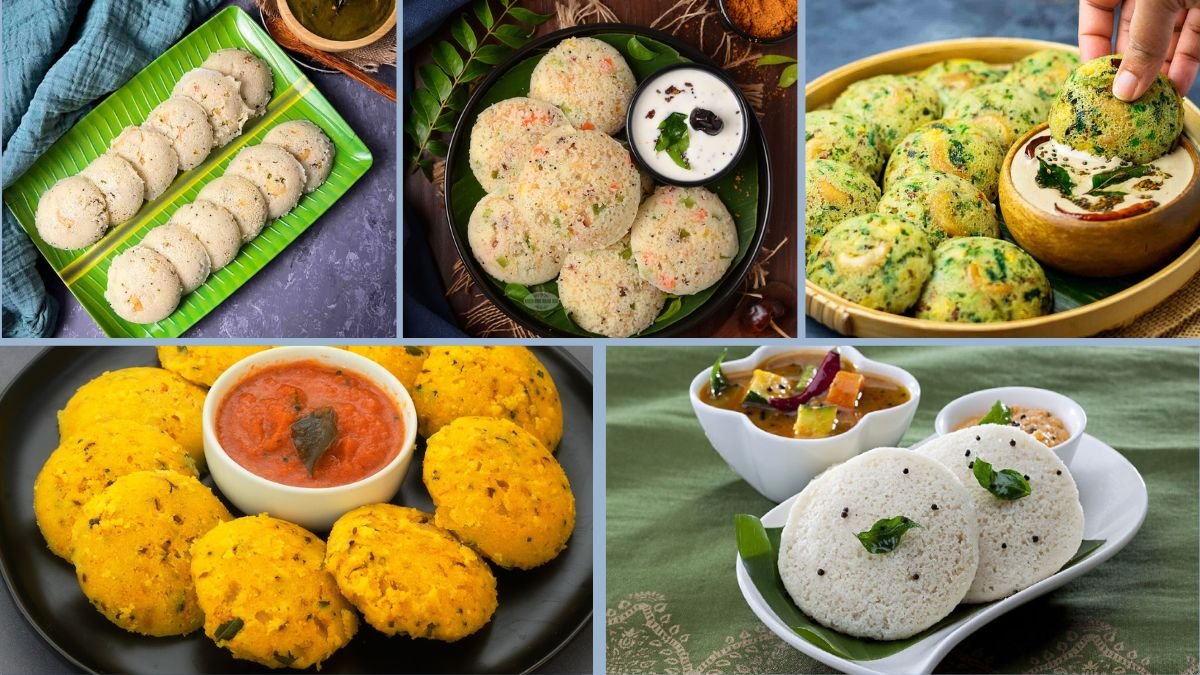Rava Idli is a popular South Indian breakfast delicacy known for its softness, lightness, and quick preparation. Unlike traditional idlis made from fermented rice and urad dal batter, rava idli uses semolina (rava or sooji) and does not require fermentation, making it an ideal option for those short on time or who prefer a fermentation-free dish. This makes rava idli accessible to many, while still maintaining the authentic flavors and nutritional benefits of a wholesome South Indian meal.
This article presents a detailed 6-step guide to cooking rava idli without fermentation, focusing on vegetarian ingredients, simple techniques, and tips for a fluffy, tasty, and nutritious outcome.
Step 1: Selecting and Preparing Ingredients
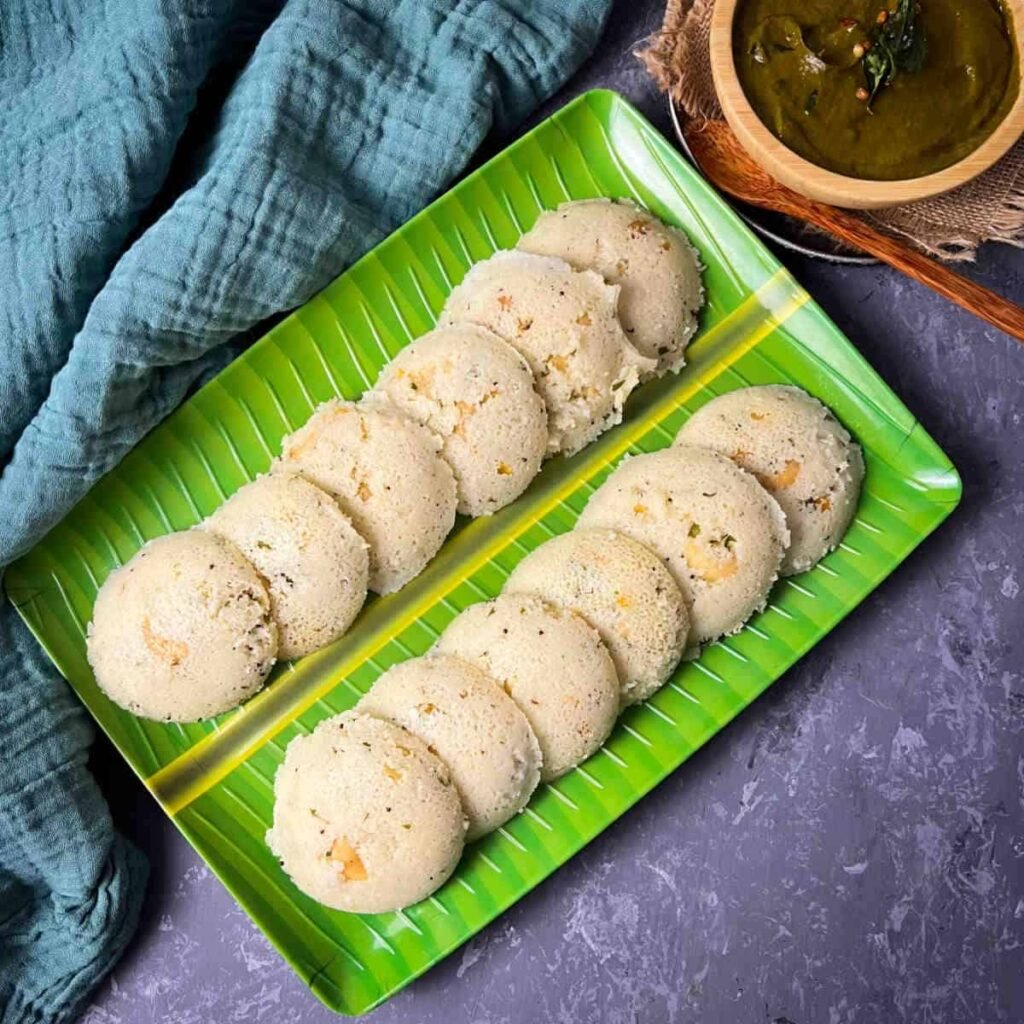
The key ingredients for rava idli are:
- Semolina (rava/sooji): Fine or medium semolina works best. Fine semolina yields softer idlis, while medium semolina gives a slightly coarser texture.
- Yogurt (curd): Fresh, thick yogurt acts as a natural leavening agent, replacing fermentation and imparting a slight tang.
- Vegetables: Optional, but finely chopped onions, green chilies, grated carrot, and coriander leaves add flavor and nutrition.
- Baking soda or Eno fruit salt: To aerate the batter quickly, giving softness and fluffiness.
- Mustard seeds, urad dal, chana dal, curry leaves: For tempering, which adds aroma and texture.
- Ginger and green chilies: For mild heat and flavor.
- Salt: To taste.
- Water and oil: For adjusting consistency and greasing molds.
Step 2: Roasting the Semolina
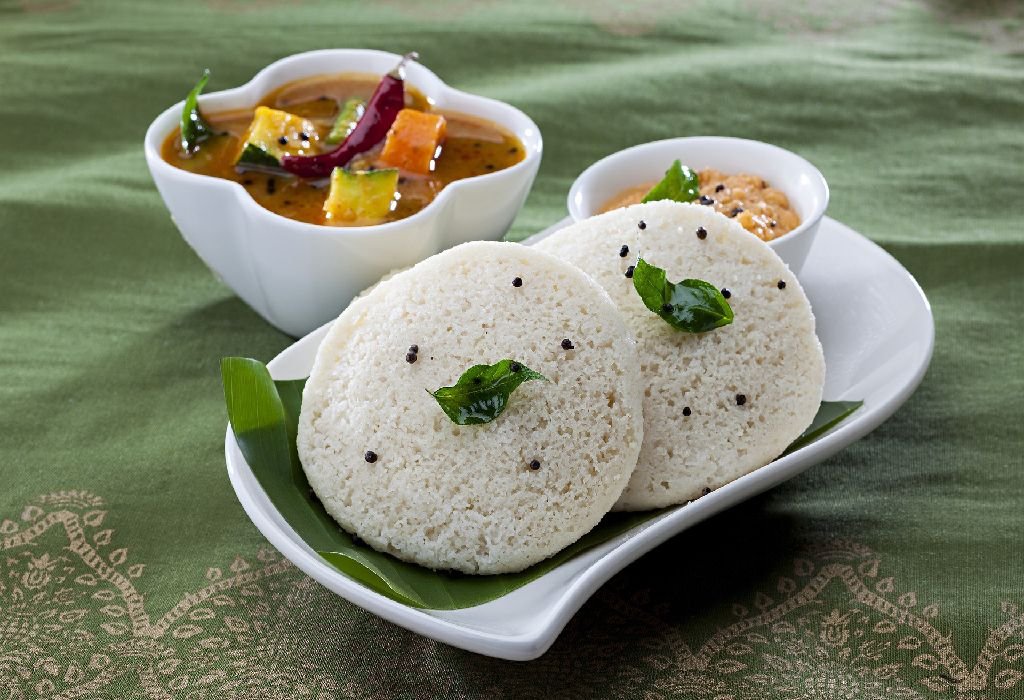
Roasting semolina is an important step to enhance its flavor and prevent a raw taste in the final dish.
- Heat a dry pan on medium heat.
- Add semolina and roast it for 3-5 minutes, stirring continuously.
- Roast until the semolina emits a nutty aroma and changes to a pale golden shade.
- Remove from heat and let it cool.
This step also ensures the semolina absorbs moisture well and cooks evenly when steamed.
Step 3: Preparing the Tempering and Vegetables
The tempering adds aroma and texture to the idli batter.
- Heat 1 tablespoon oil in a small pan.
- Add mustard seeds and let them crackle.
- Add urad dal and chana dal; fry until golden brown.
- Add finely chopped ginger, green chilies, curry leaves, and onions. Sauté until onions are translucent.
- Turn off heat and let the tempering cool slightly.
Meanwhile, finely chop vegetables like carrots or coriander and keep them ready to mix.
Step 4: Making the Batter
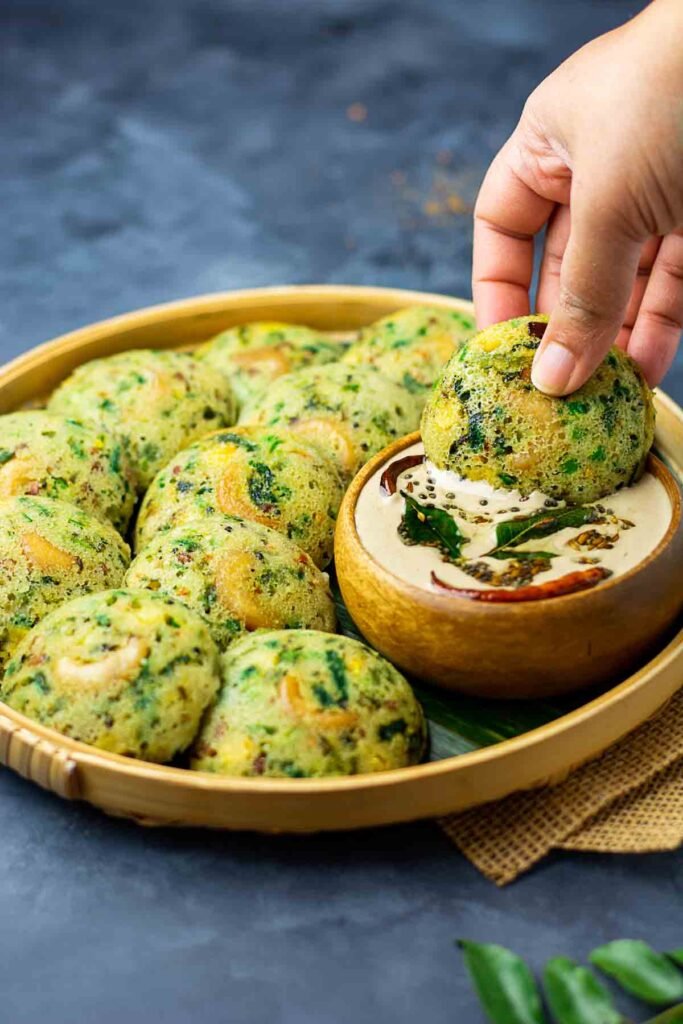
- In a mixing bowl, combine the roasted semolina and yogurt.
- Add salt to taste.
- Gradually add water to achieve a thick, pouring consistency—not too runny or stiff.
- Stir in the prepared tempering and chopped vegetables.
- Cover the batter and let it rest for 10-15 minutes. Although no fermentation is needed, this resting period allows semolina to absorb moisture and soften.
Step 5: Adding the Leavening Agent and Steaming
- Just before steaming, add ½ teaspoon baking soda or 1 teaspoon Eno fruit salt to the batter.
- Mix gently but quickly; you will notice the batter becoming frothy and light due to the chemical reaction releasing carbon dioxide.
- Grease idli molds or plates with oil to prevent sticking.
- Pour the batter into the molds, filling them ¾ full to allow space for rising.
- Steam in an idli cooker or pressure cooker (without the whistle) for 10-12 minutes over medium heat.
To check doneness, insert a toothpick or knife; it should come out clean.
Step 6: Serving and Accompaniments
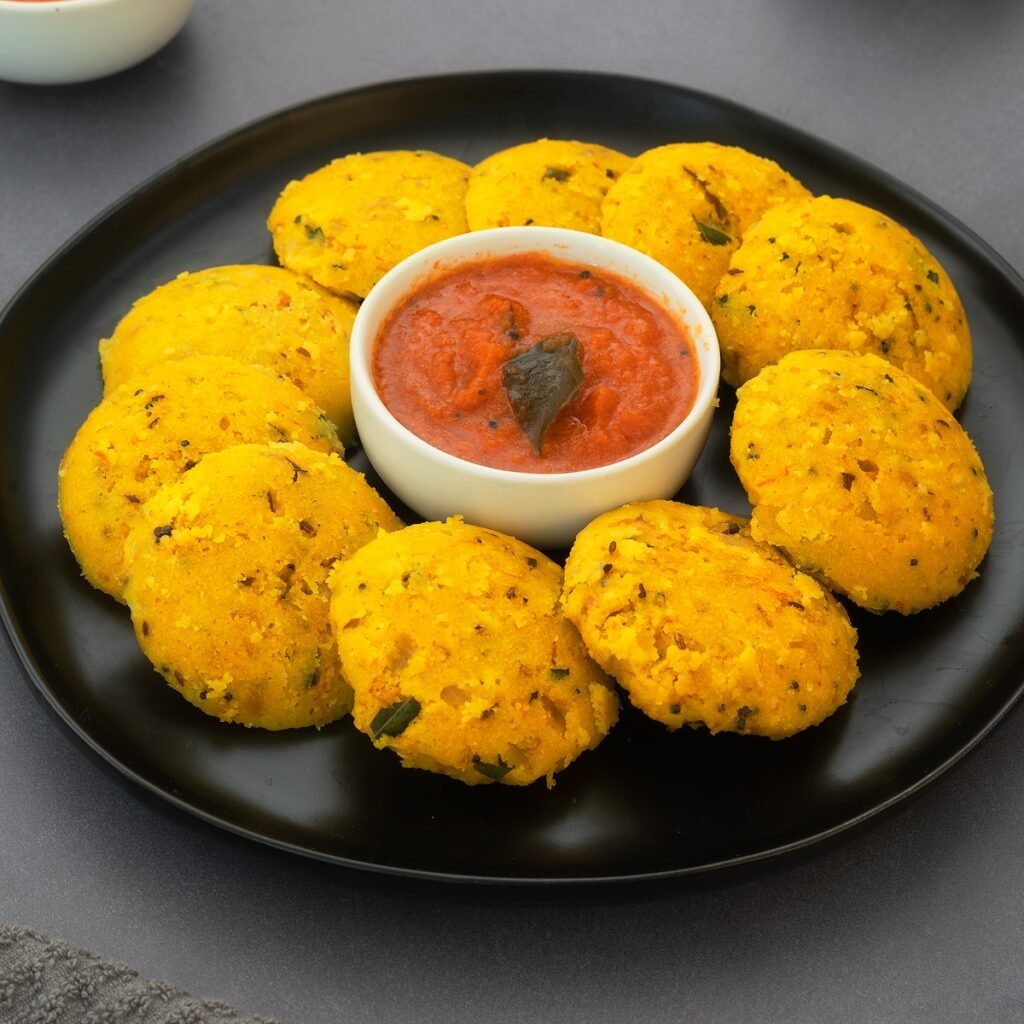
- Remove the idlis from molds carefully using a spoon.
- Serve hot with traditional South Indian accompaniments such as coconut chutney, tomato chutney, and sambar.
- Garnish with freshly chopped coriander or a drizzle of ghee for extra flavor.
Nutritional Benefits and Variations
- Rava idli is rich in carbohydrates from semolina, providing energy for the day.
- The addition of yogurt introduces probiotics and protein.
- Vegetables increase fiber, vitamins, and antioxidants.
- Using less oil and steaming keeps the dish light and healthy.
- Variations include adding grated beetroot for color, finely chopped capsicum, or grated ginger for extra zing.
Tips for Perfect Rava Idli Without Fermentation
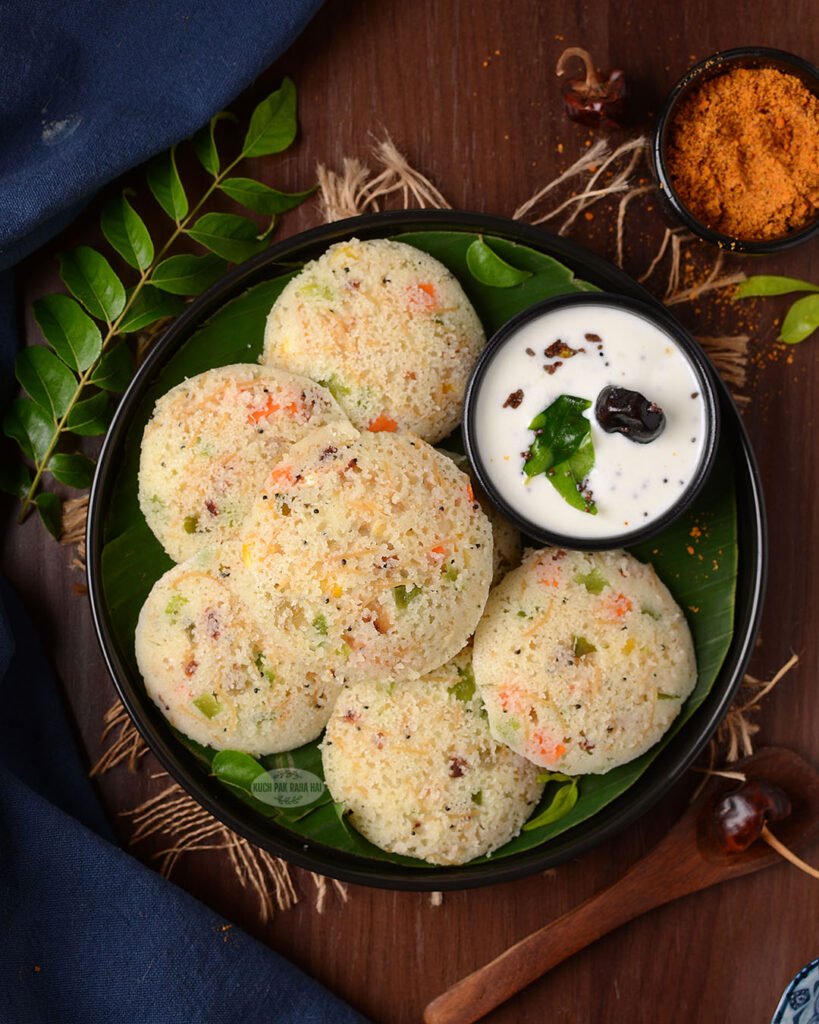
- Use fresh yogurt for better taste and leavening.
- Avoid overmixing once the leavening agent is added to preserve air bubbles.
- Roasting semolina well prevents a gritty texture.
- Resting the batter before steaming is key to softer idlis.
- Don’t skip the tempering—it elevates flavor significantly.
Conclusion
Rava idli without fermentation is an excellent alternative to traditional idli for quick preparation without compromising on taste or nutrition. By following this 6-step guide, you can easily make soft, fluffy, and delicious idlis at home using simple vegetarian ingredients and no fermentation time.
This method is perfect for busy mornings, unexpected guests, or whenever you crave a comforting South Indian breakfast. The combination of roasted semolina, yogurt, tempering, and steaming results in a dish that’s light, nutritious, and satisfying.
